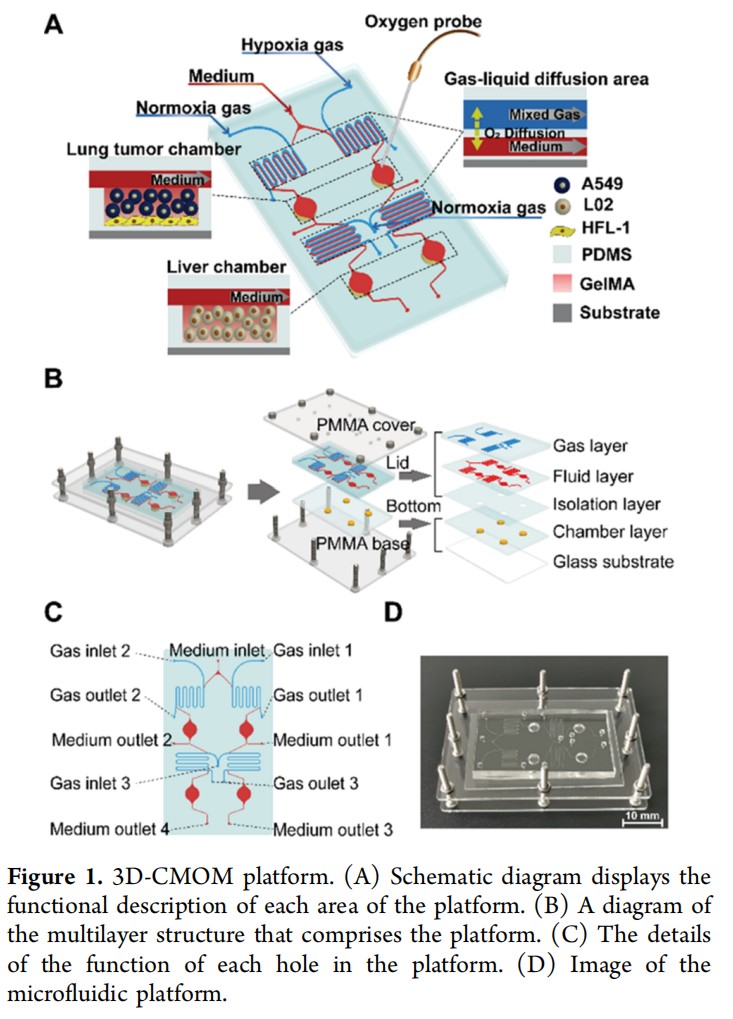In recent days, the project team led by professor Zhang Dawei from the future optical laboratory invented a three-dimensional-culture multiorgan microfluidic (3D-CMOM) chip to precisely control DO concentration in the different 3D cell culture chambers. The performance of the regulation of the oxygen concentration in the 3D cell culture chamber was analyzed. Subsequently, they studied the influence of metastasis of lung cancer on the liver using the 3D-CMOM platform with hypoxic microenvironment and investigated the effects of cancer cell cocultures with fibroblasts in cancer metastasis by means of transcriptomics (RNA-seq) and protein expression detection. Furthermore, they evaluated the cancer treatment effects of hypoxia-induced HIF- 1α inhibitors (TPZ, SYP-5, and IDF-11774) under nomoxic and hypoxic environments on the 3D-CMOM platform. The paper entitled “An oxygen concentration-controllable multi-organ microfluidic platform for studying hypoxia-induced lung cancer-liver metastasis and screening drug” was published in ACS Sensors. The main author of the paper is Dr. Zheng Lulu and Wang Bo. The oxygen-controlled multiorgan microfluidic chip provides a platform for researchers to study the mechanism of hypoxia-induced cancer metastasis and the therapeutic effects of hypoxia-related target anticancer drugs.

In the process of pre-marketing clinical trials of drugs, which traditionally rely mainly on animal models to complete a large number of toxicities, dynamics and drug efficacy evaluations. Due to species differences, ethical issues, and lengthy experimental cycles in animal models, it has become an urgent need to establish a fast, high-throughput, automated, and new drug screening platform which avoids those weakness for global drug research and development. Recently, people have gradually realized organ chips, especially multi-organ chips that integrating multiple organs that mimic the human metabolic pathway, which can increase the value of animal experiments for medical research from basic biological research to drug development and testing. Multi-organ chips have been used to simulate the human microenvironment, combined with cell culture technology, supplements animal experiments by cultivating healthy or diseased human cells or tissues to verify the efficacy and toxicity of drugs, thereby shortening the long period of clinical trials.
Hypoxic microenvironment widely exists in solid tumors and is one of the main causes of tumor proliferation, invasion and metastasis. It can also make cancer cells resistant to many traditional anti-cancer drugs. Therefore, hypoxia is an important feature of the tumor microenvironment, and it is very important to accurately simulate the tumor microenvironment through multi-organ chips.
Link to the paper: https://pubmed.ncbi.nlm.nih.gov/33657793/

 Home
·
News & Events
·
Content
Home
·
News & Events
·
Content

